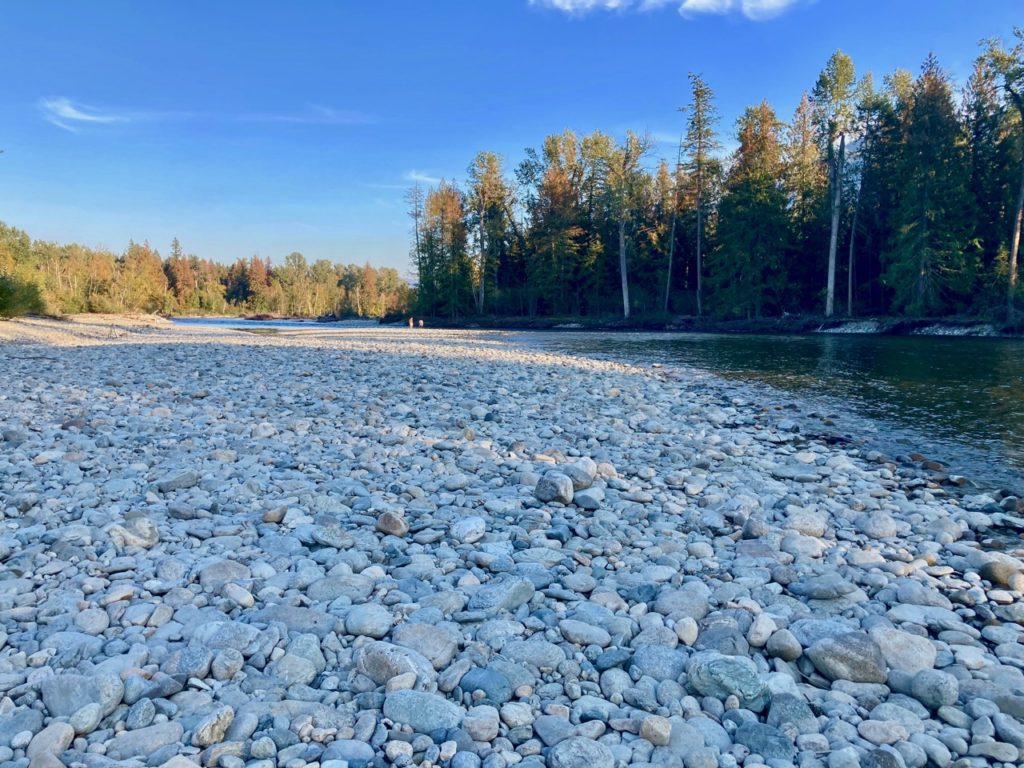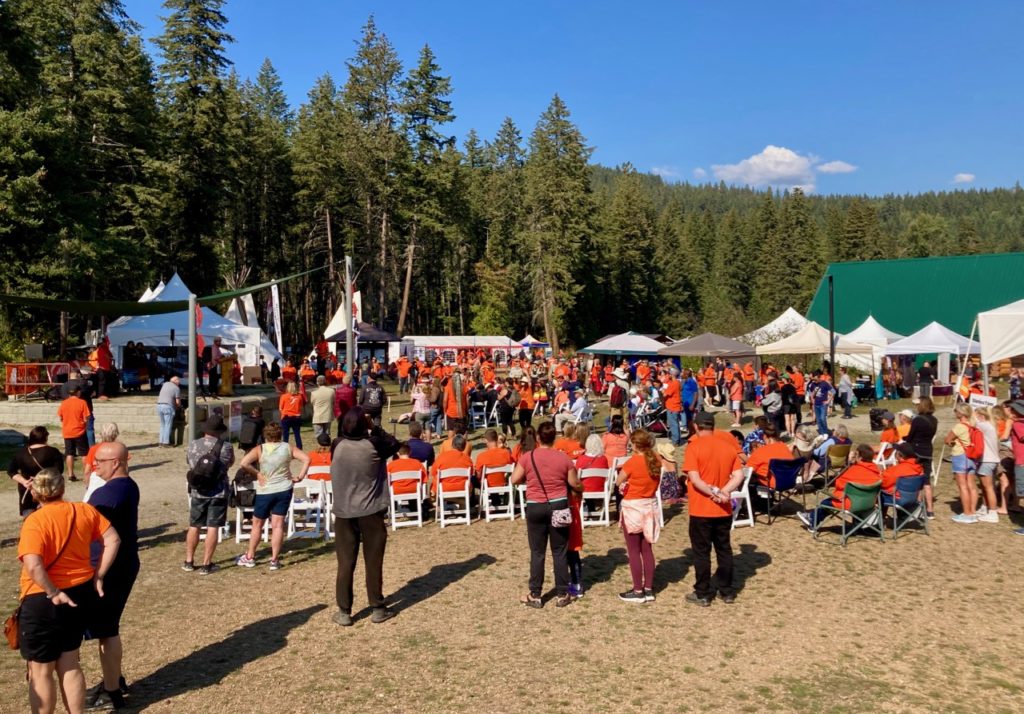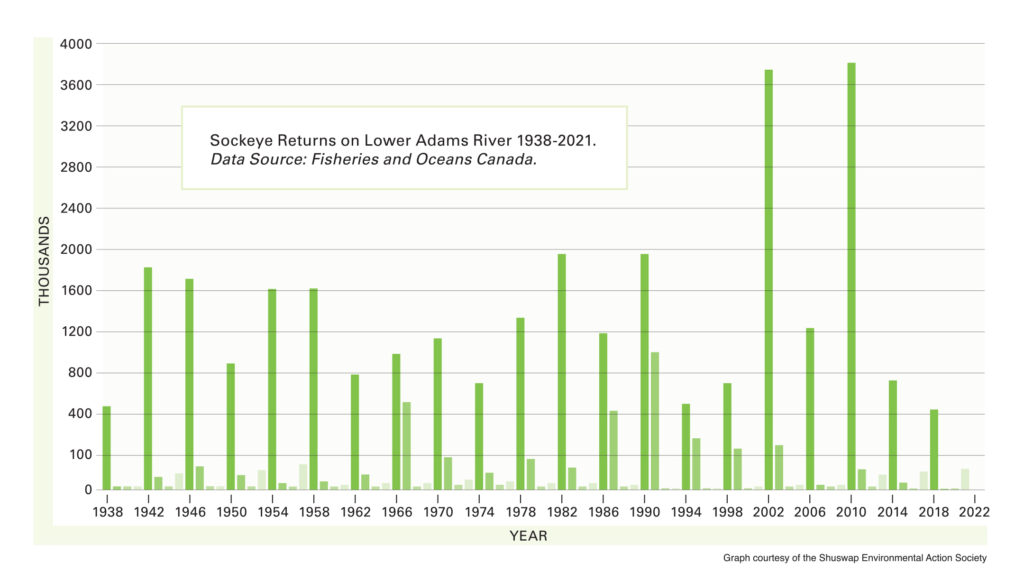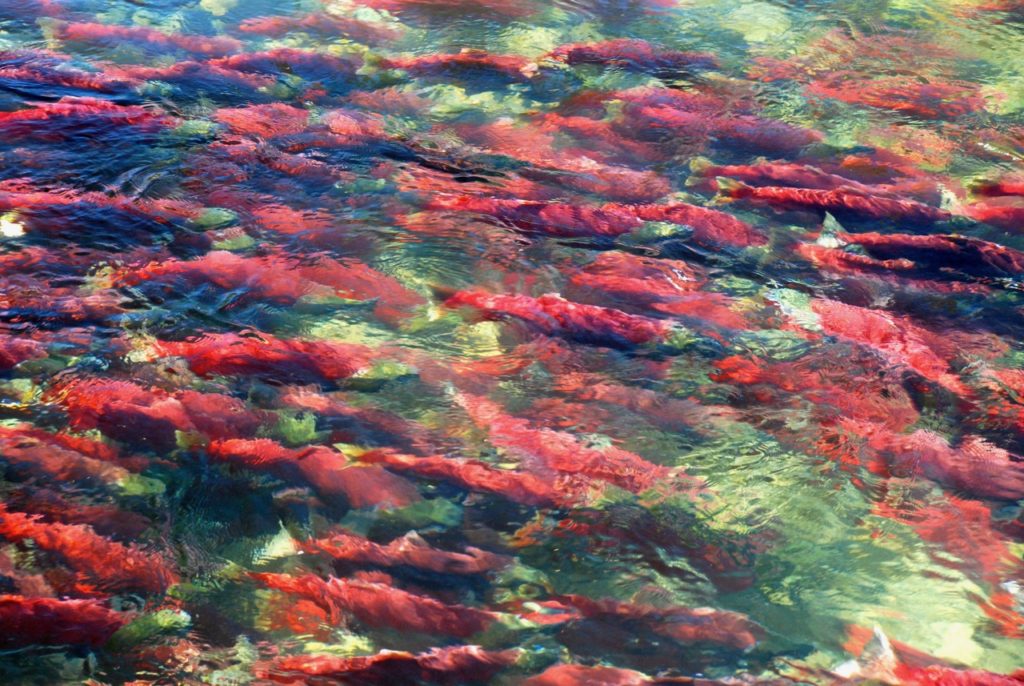
While it was wonderful to see the local Secwepemc communities take the lead for this year’s Salute to the Sockeye opening ceremonies at the Adams River, the celebratory mood was dampened because the salmon were not yet in the river. As the climate-change fueled hurricane ravished Florida, the current impacts in B.C. and elsewhere are the unseasonably warm weather and the lack of rain. The sockeye are programmed to begin spawning now, but the warmer than normal temperatures and lower than normal flows have thrown a monkey wrench into their schedule.

The number of salmon returning to the Adams River serves as a barometer for gauging both the health of the ocean and freshwater ecosystems and the efficacy of fisheries management. Since the record-breaking escapement in 2010 of 3,860,000 sockeye, the numbers have been steadily declining with 2018 being the lowest number on record for a dominant run of just 535,564 fish. Four years ago, the run was also late, but at least there were fish in the river for people to view at the opening of the Salute.

While ocean temperatures, competition from Alaskan hatchery fish and fish farm diseases and pests are major concerns, the greatest determinant of the run size is the number of fish caught by commercial fisherman in the gulf.
The Pacific Salmon Commission’s Fraser River Panel makes the decisions regarding the allowable catch for both Canada and the United States. In 2018, their estimates based on test fisheries was overly optimistic and as a result too many sockeye ended up in nets instead of being allowed to return to spawn. Given that the Panel is primarily made up of commercial fishing representatives, it is no wonder that rather than taking precautionary measures, they often choose to allow an unsustainable harvest.
This year was no exception, as the Commission’s own report shows. While the summer run was larger than normal, the late run for the entire Fraser River was forecasted to be 3,688,000, then lowered to 2,050,000 and as of September 24th, it was just measured at 1,782,600 after they allowed a total catch of 1,441,913 fish.
Currently, Fisheries staff estimate there are approximately one million fish taking refuge in the depths of Kamloops Lake as they wait for the water temperatures to cool. The ideal temperature for spawning is 14 degrees, and currently due to the unseasonably warm autumn, the river temperature is 17-18 degrees. As well, due to the drought, the flow is diminished, and the river levels have dropped significantly, thus drying out a portion of the spawning beds. Meanwhile, the forecast for the next two weeks is for sunny skies and above normal temperatures.
Salmon build up a storage of fat to allow them to swim great distances to reach the gravel beds where they were born, and the clock is ticking for these sockeye now waiting for cooler water. Warm water has less oxygen, which the fish need to thrive. Temperatures of 20 degrees and above can kill the fish and 18 degrees is very stressful.
UBC professor Scott Hinch’s research has focused on salmon migration physiology and he kindly provided more details about the current situation. It is typical for the fish to take refuge in lakes to recover from the stress of their journey and to allow their eggs and sperm to ripen. Their systems are thermally regulated and they can sense when the conditions are best to continue their migration. In addition to providing adequate oxygen, lower water temperatures are needed to slow the aging process and the impacts of diseases.
Most of the sockeye are encoded to spawn by the third week of October, so the success of this year’s run is also dependent on when the fish arrived in Kamloops Lake, where they are holding in the center to avoid the lower level that has less oxygen and the surface that is too warm. Crowded conditions in the lake can also stress the fish. Another key factor is the rain that normally comes in October, which they can sense with their precise olfactory organs that also directs them to where they were born. Fortunately, salmon are quite resilient, and no doubt many will finally make their way to the Adams. However, it remains to be seen if they will be able to successfully spawn given the amount of stress caused by the delay, low stream flows and the warm temperatures.

Meanwhile the Salute is carrying on as if this year’s dominant sockeye salmon run is normal. There are venders, displays, Secwepemc cultural exhibits and marvelous trails to hike on and enjoy the gorgeous fall colours. However, visitors who have spent money for expensive fuel to travel from afar to witness the Shuswap’s most famous phenomena may be disappointed. The advice needs to be widely publicized that for anyone wishing to see this year’s Adams River salmon run should delay their plans until the salmon finally arrive.
POSTSCRIPT
Four years ago the weather conditions were excellent, however many of the key spawning beds were dry because the river channels had shifted. the primary problem then was overfishing, as the Fraser Panel have over-estimated the run size and allowed far too many salmon to be caught by commercial fishers. Fisheries kept announcing that more salmon were expected to arrive up until the end of October, when it was obvious that these missing fish were missing for good.
Two years ago, excavators carved out the blockages to open up the key spawning channels, which worked well. This year the situation is much different, given that they know there are a significant number of salmon on their way to the Adams, except that now the big unknown is if they will make it here because of the high stream temperature and if they do, whether they will have enough energy left to spawn and will there be room for them all to spawn given the low flows.
Professor Hinch also explained how they salmon move in mass. If a few leaders begin to head up stream, then most of the rest will follow, which is similar behaviour for other species. High water temperatures cause the salmon to expend more energy, thus using up their fat reserves. Thus, the salmon seeking refuge now could be for multiple reasons, including taking time to recover from their long trip up the Fraser, as well as avoiding heading into more warm water.
All the visitors disappointed by the lack of salmon to see are getting a lesson in climate change impacts and learning how rising levels of carbon in the atmosphere is creating havoc with natural ecosystem processes. It will be most interesting to see what happens over the next month as we wait for the salmon to arrive.
LEARN MORE from this CBC interview with UBC salmon expert Professor Scott Hinch – link
UPDATE
As of October 6th, the sockeye are beginning to arrive at the Adams River. Not yet in the thousands, but hundreds can be viewed along some trails. However, there are few, if any yet at the viewing platform. Best places to see them is along the trail between the mouth of the river and the displays. Also, along the shoreline of the island (cross the bridge west of the displays).







